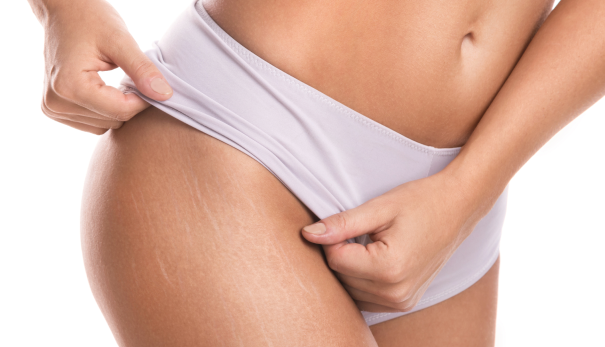Scars & Stretch Marks
Scars and stretch marks often tell a story. Sometimes, they might be stories we’re proud of, but other times, we wish we didn’t have such an obvious reminder. Scars and stretch marks can be particularly distressing if they’re located somewhere conspicuous, such as the face, or are hard to cover up. Though scars and stretch marks are nothing to be ashamed of, we also believe they shouldn’t be allowed to damage your confidence.
What are Stretch Marks?
Stretch marks, also called striae, are thin lines that may appear when the skin rapidly stretches or shrinks. These streaks are a type of scar caused by stretching of the skin. With up to 90% of people having them, stretch marks are extremely common.
Stretch marks are often caused by pregnancy or significant weight changes. Teenagers can also develop stretch marks from rapid growth spurts. You are more likely to develop stretch marks if you are female, have a family history of stretch marks, are overweight, take certain medications, or have insufficient skin elasticity.
Though stretch marks aren’t harmful, they can be itchy and sore and have an unwanted effect on your appearance. Some people don’t mind their stretch marks, while others find them a source of frustration or insecurity. Stretch marks are typically indented and vary in length and width. Depending on your skin color, they may start out as red, bluish, or brown, but they usually fade and become lighter than your surrounding skin.
Stretch marks can occur anywhere that your skin rapidly stretches. They’re most common on the buttocks, thighs, stomach, breasts, and upper arms. Your stretch marks may change or fade with time, but they’re often permanent.
Frequently Asked Questions
Take the next step.
To learn more about scars and stretch marks or to schedule your consultation with Board-Certified Cosmetic Surgeon Dr. Langdon, please fill out the form on this page or call The Langdon Center at (203) 453-8625. We look forward to working with you! The Langdon Center serves patients in the Guilford & New Haven, CT areas.





